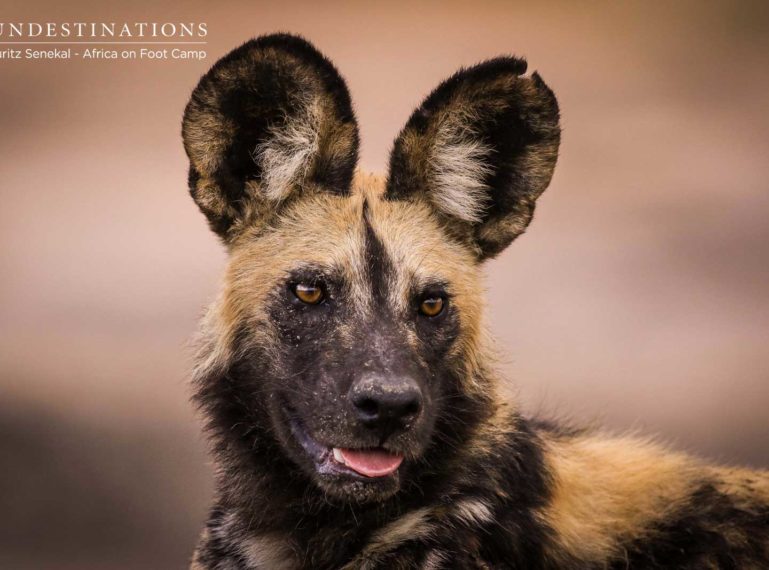
According to textbooks, May – August is the African wild dog’s denning period. This is when the dogs seem to cease their nomadic ways and individual packs lead a more sedentary lifestyle, and the timing is perfect given that it generally overlaps with the end of the impala rutting season. The end of the impala ram’s mating season means there are plenty of burnt-out, exhausted rams that make for easy prey. Isn’t it curious how nature and the food chain works?
The energy used during the wild dog’s wanderings of a wide home range is now poured into the rearing of the newborn pups. These beautifully painted mottled dogs are cooperative breeders, which means the entire family unit helps to rear the young. Their social behaviour is quite remarkable in terms of the roles they naturally gravitate towards. You have your den guards, your babysitters and then your feeders in charge of regurgitating meat for the youngsters born from the alpha male and female (the only pair that breed). The newborns are born helpless and are completely vulnerable to predators out there, and thus need the protection of the pack until roughly 3 months old when they are ready to emerge from their den site.
In the parts of the Klaserie Private Nature Reserve occupied by nThambo Tree Camp and Africa on Foot there is a resident mega-pack of wild dogs that guide Mauritz has spotted on a regular basis. The dogs have been seen outside of their sedentary period, and currently the surrounds of both camps enjoy sightings of a small pack of 6, a pack of 14 and a mega-pack of 25 dogs. It’s quite clear that the Klaserie is a haven for spotting the African wild dog roaming free in the wild!
Mauritz managed to lead guests into an incredible sighting of the mega-pack of dogs targeting, stalking and executing a brutal but swift kill. It’s not often guests get to witness a mammoth event of this kind, as it’s normally only the tail-end of the sighting after the takedown, that is observed. Guests had enormous insight into the hunting technique and social behaviour of the dogs. They watched the dogs take chase, they listened to the high-pitched twittering and excited squeals as the unsuspecting prey was taken down with energy and vigour.
Wild dogs hunt in a similar way to hyena, using a method called coursing. This basically means they target their prey within a herd and chase their quarry until the point of exhaustion, and then grapple their rump and begin the rather brutal disembowelling process.The meals-on-wheels are the tired impala rams which make for easy meals during the denning period, as it’s imperative to feed the pups! Wild dogs have a vital role in the wild in that they are known to eliminate the sick and weak within herds, the individuals that would ultimately meet their natural demise in a short space of time.
Mauritz and the team have spotted the dogs over the past few months at various intervals which means they may well have been returning to their old den sites.
This was another epic sighting deep in the heart of the Klaserie Private Nature Reserve and we can’t help but wonder if the gregarious pack have a few pups stashed somewhere. It is only the beginning stages of the denning period, so hopefully in the coming months we’ll deliver news about new fluffy additions to the Klaserie.
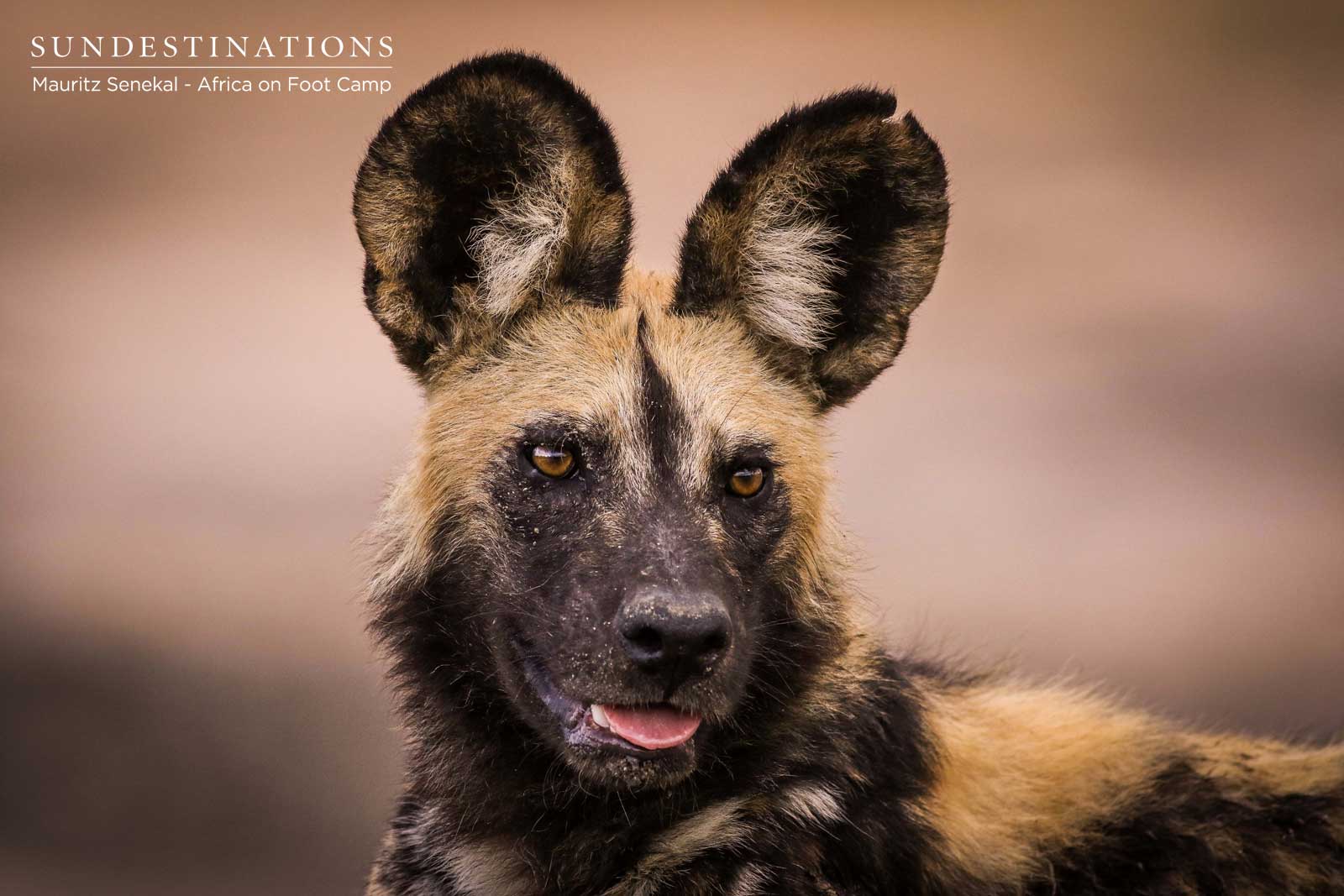
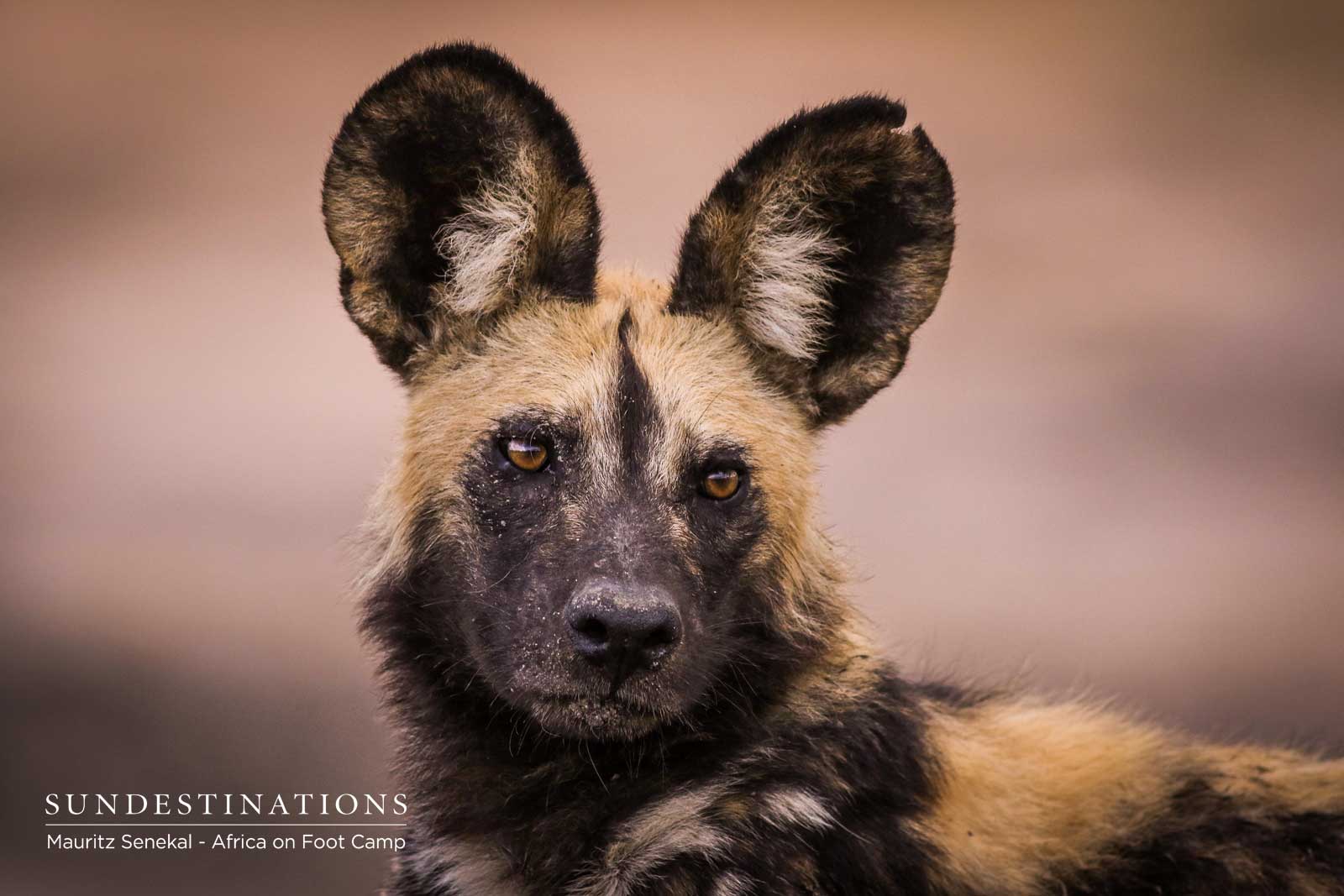
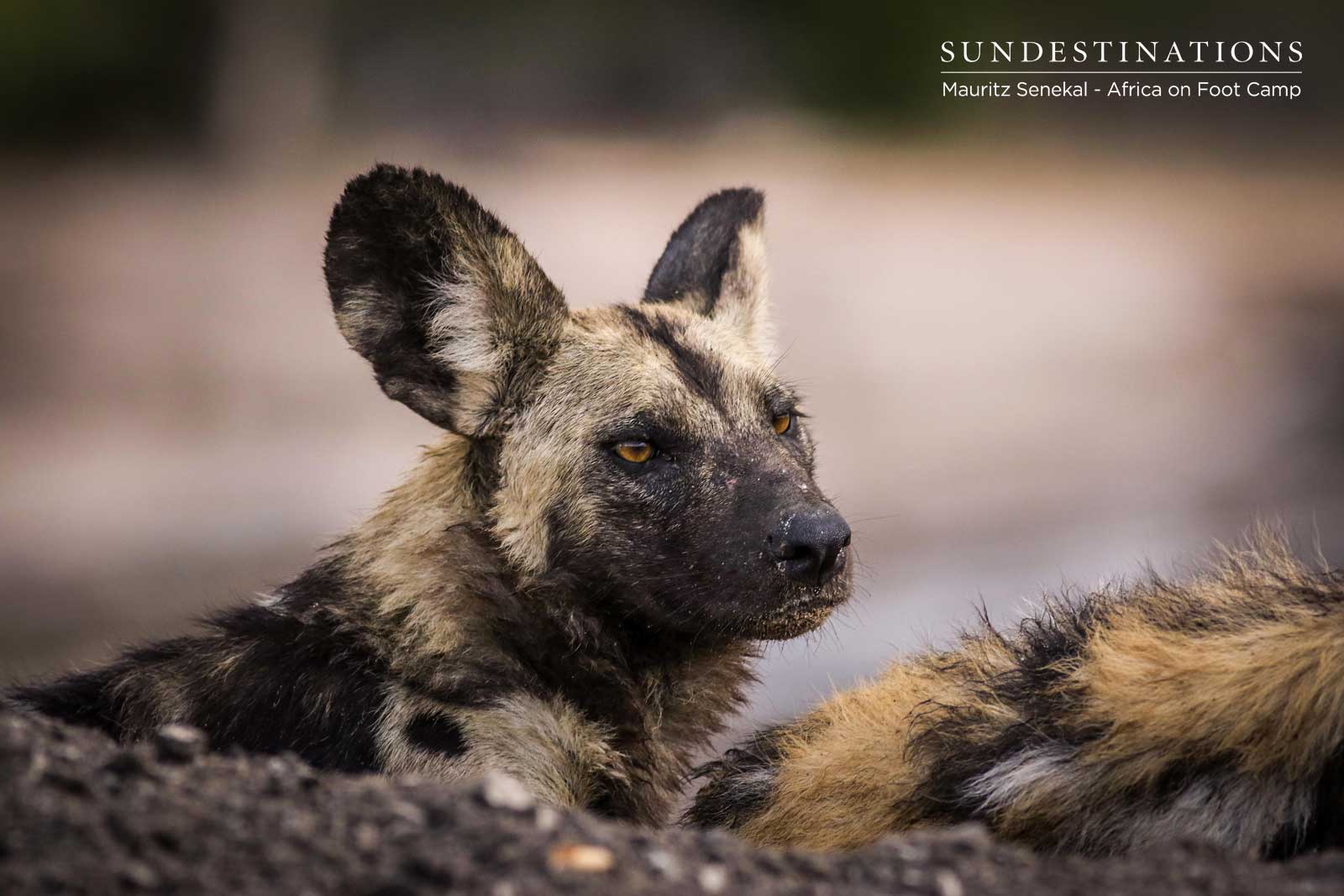
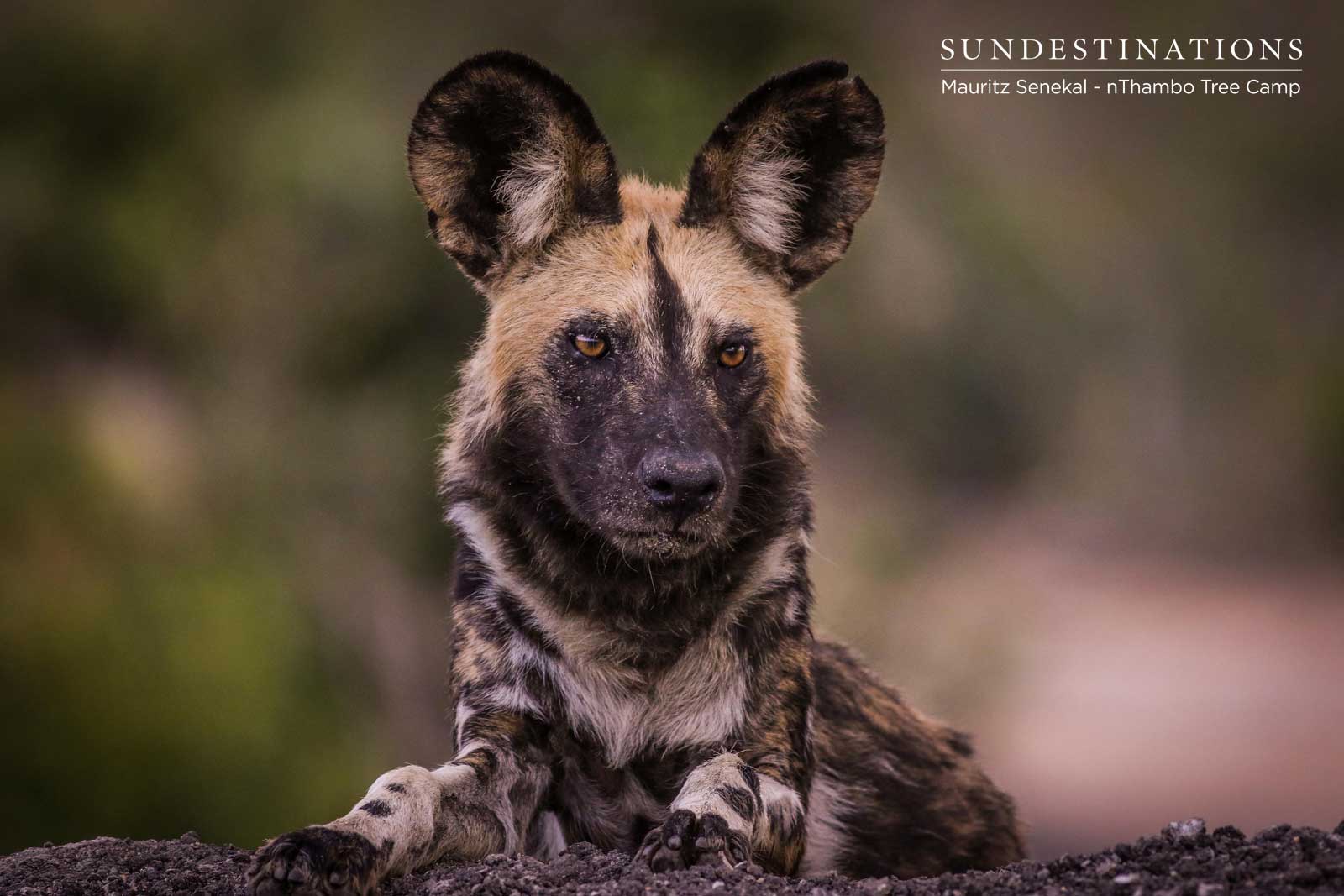
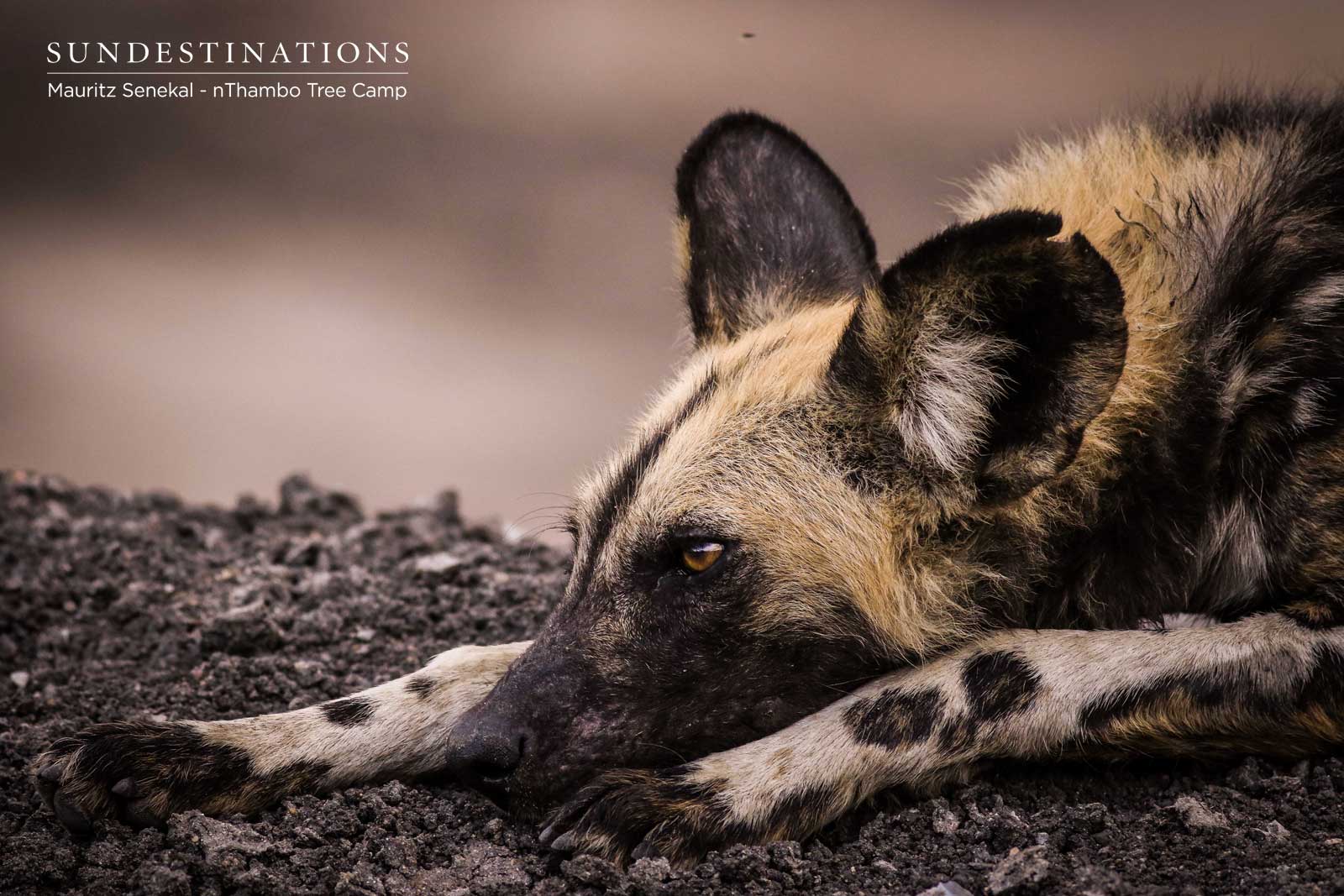
Leave a Comment